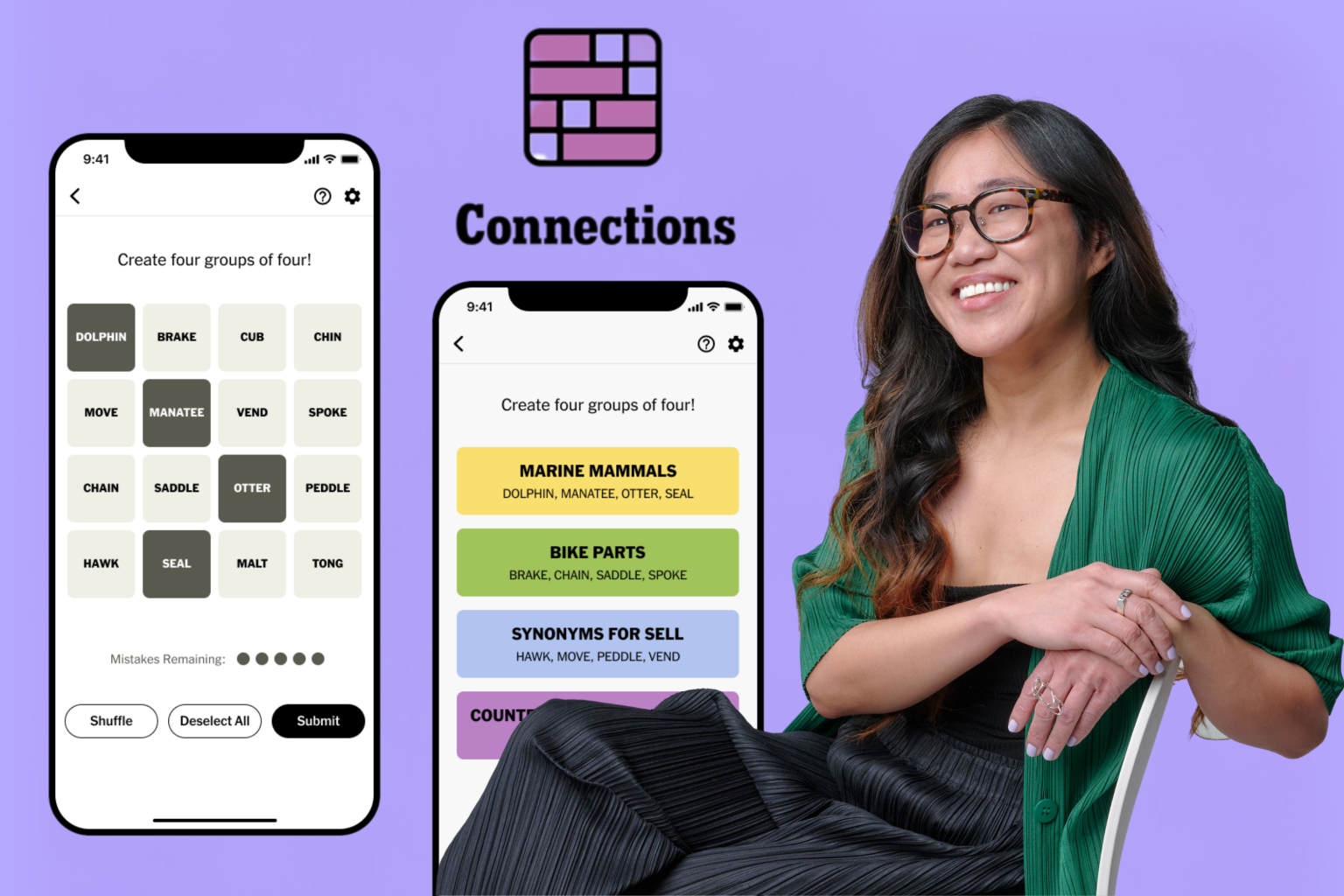The online word puzzle game “Connections,” a creation of The New York Times, challenges players to categorize 16 words into four distinct groups based on shared meanings or associations. Wyna Liu, the puzzle’s editor, crafts these daily brainteasers, drawing inspiration from everyday experiences and meticulously assembling each board from scratch. Her process involves consulting a notebook overflowing with ideas and a spreadsheet serving as a digital sketchpad, painstakingly manipulating word combinations until the puzzle achieves its desired complexity. The game’s allure lies in its intricate wordplay, often employing homophones and unexpected connections to keep players engaged.
The “Connections” gameplay revolves around identifying the hidden relationships between seemingly disparate words. Each set of four words belongs to a color-coded category, with yellow indicating the easiest level and progressing through green, blue, and finally purple, the most challenging. Players must correctly assign all four words to their respective categories to clear the board. Incorrect guesses accrue towards a four-mistake limit, adding a layer of strategic thinking to the process. To aid in deciphering the connections, players can shuffle the words on the board. Adding to the complexity, some words may appear to fit multiple categories, but only one correct solution exists.
The categories themselves encompass a vast range of topics, from Halloween costumes to music genres, encouraging players to think laterally and explore various connections. For instance, the category “take home, as income” might link words like “clear,” “earn,” “make,” and “net.” This diversity ensures each puzzle presents a unique challenge, catering to a broad audience. Liu’s creativity in crafting these diverse and thought-provoking connections is central to the game’s enduring appeal.
To illustrate the game, let’s examine a specific example. On January 23, 2024, “Connections” puzzle #592 presented players with four categories: “Outdo” (yellow), “Picnic Accessories” (green), “Parts of an Indiana Jones Costume” (blue), and “Rhymes U.S. President Names” (purple). The words within these categories included “better,” “eclipse,” “surpass,” and “top” for “Outdo;” “basket,” “blanket,” “cooler,” and “utensils” for “Picnic Accessories;” “bomber,” “fedora,” “satchel,” and “whip” for “Parts of an Indiana Jones Costume;” and “pagan,” “smarter,” “vixen,” and “widen” for “Rhymes U.S. President Names.” This example showcases the variety and cleverness of the connections, requiring players to draw upon different areas of knowledge and engage in creative thinking.
Newsweek often provides hints for daily “Connections” puzzles, offering a helping hand to players struggling to identify the connections. These hints might suggest the general theme of a category or offer clues about specific words, encouraging players to persevere without revealing the entire solution. This support allows players of varying skill levels to engage with the puzzle and experience the satisfaction of uncovering the connections. The daily release of new puzzles, combined with the availability of hints, fosters a sense of community among players and encourages regular engagement.
“Connections” is available daily at midnight in the player’s local time zone, offering a fresh challenge every day. For word puzzle enthusiasts seeking further mental stimulation, The New York Times also offers Wordle, another popular word game for which Newsweek also provides daily hints. The success of both “Connections” and Wordle highlights the enduring appeal of word puzzles and the satisfaction derived from deciphering hidden connections and expanding one’s vocabulary. These games provide a daily dose of mental exercise, fostering critical thinking and problem-solving skills in an engaging and accessible format.

